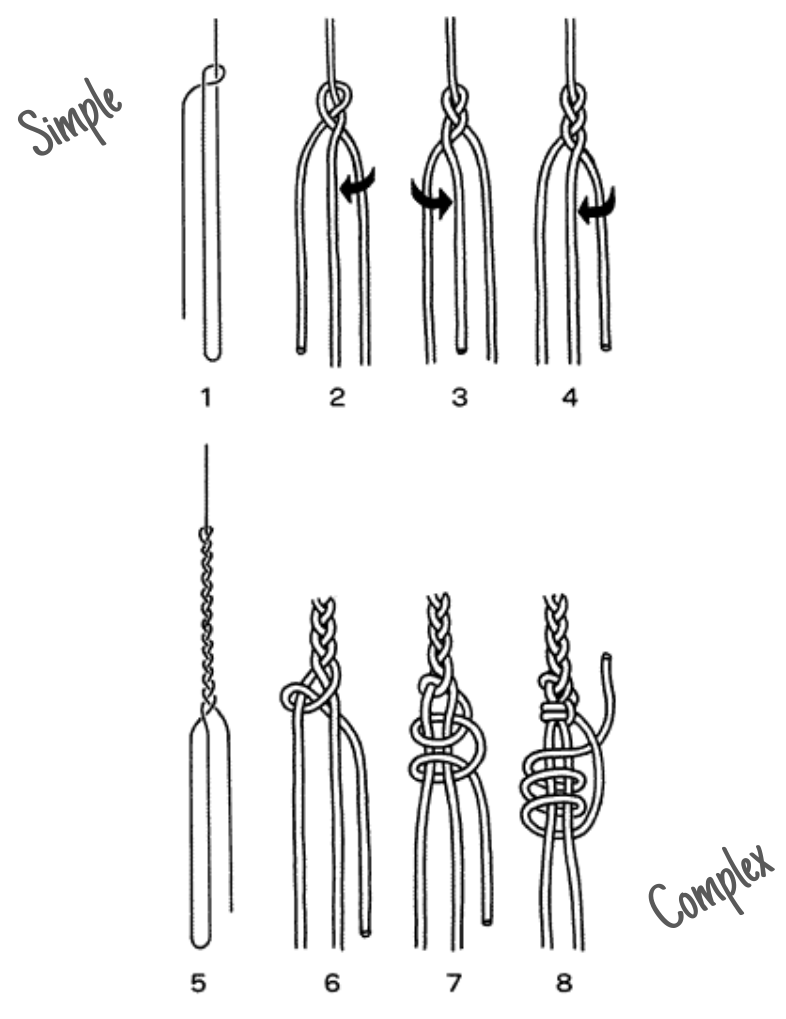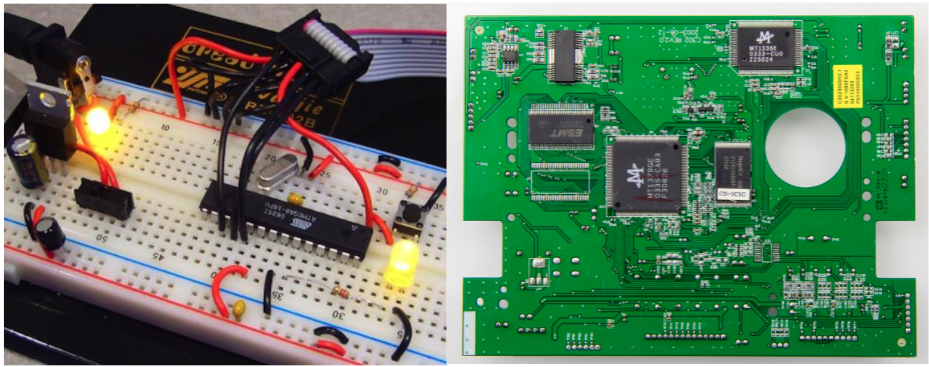Programming: Simplicity in Prototypes
March, 2022
Prelude: add10
Here is a deceptively simple question. Let's say I have the following code:
x = 5
def add10():
return x + 10
print(add10())What does add10() return?
One could make a case that add10() returns 15, but they
would be wrong. A more cynical person might (rightfully) point out that
add10() is dependent on x, so we can only answer the
question if we know what x is. Closer, but I didn't ask
what add10() returns for a given value of x.
I asked what does add10() return?
I would argue that we can never know what this function returns. The best that we can do is know what this function returns at a specific time. x can change, and with it so will our function.
If, in the middle of your code, you encounter a line of code like
value = add10(), you're now in stateful hell. Enjoy
backtracking through the code to try and figure out what
value is.
Simplicity
I recently stumbled upon Rich Hickey's 2011 talk, Simple Made Easy. Rich has a 30 year SWE career and is known as the creator of Clojure, a lisp dialect built on top of the JVM. He's been around the block. In the talk, Rich defines simplicity as 'the property of being un-entangled. Simplicity is the opposite of complexity – therefore, a complex thing is highly entangled.
What does 'entangled' mean? Most obviously, entanglement describes things that are joined together in some way. But I prefer a slightly more subtle definition: things that are entangled cannot be understood separately from the whole. So a complex thing has a lot of pieces that cannot be separately understood. A set of simple things, by contrast, are as easy to understand separately as they are together.

Let's get the basics out of the way. This code:
x = 5
def add10():
return x + 10
print(add10())
is complex. It is complex because the function add10() is
entangled with the value of x. More than that, every
single thing that touches x is entangled with every other
thing that touches x, in a combinatorial way. You cannot
know the value of add10 unless you know what previous code
was run and how that impacted the value of x.
def add10():
return x + 10
def append10():
x = [x]
return x.append(10)
def update10():
x = {x}
x.update(10)
If you run add10() and get a type error from the code
above, a) you deserve it, and b) debugging is going to be very hard. I
can stare at the definition of add10() all I want, but I
won't be able to find the source of the type error unless I understand
the code as a whole. If your codebase is larger than 200 lines, this
absolutely sucks.
Why Do People Entangle?
Hopefully everyone will agree that building anything long term and sustainable in the environment above is difficult. But people do things like this all the time. Why?
Because it's easy. Not in the sense that it's easy to understand – we just laid out above that this kind of entanglement is anything but easy to understand. Rather, it's easy to write. You need to store a new piece of state? Great, just throw it at the top of your file (in global scope), and now you know that every other part of your code has access to it. No need to keep track of pesky function parameters, or threading variables between different areas of your code.
Let's look at an example. Imagine you're trying to add a new hit() function to our blackjack game below. Which is easier to write?
deck = [1, 2, 3, 4, 5]
hand = []
def deal():
hand.append(deck.pop())
hand.append(deck.pop())
def shuffle():
random.shuffle(deck)
def hit():
hand.append(deck.pop())
def create_deck():
return [1, 2, 3, 4, 5]
def deal_initial_hand(deck):
return [deck.pop(), deck.pop()]
def shuffle(deck):
return random.shuffle(deck)
def hit(hand, deck):
return hand.append(deck.pop())
def main():
deck = create_deck()
hand = deal_initial_hand(deck)
hand = hit(hand, deck)In order to do anything on the right side, you have to think about where the data lives and how it gets to your code. By comparison, on the left side all of the state you could ever need is right there.
Entanglement is the programmer's equivalent of eyeballing a measurement or cutting a corner. We could route our variables around such that each function is isolated, but it's tedious and requires thinking about interfaces. Much faster to write code quickly and see what pops out in the terminal and iterate on that till it works.
But it's important to note that programmers aren't just being lazy, this temptation is often grounded in logic. Justification comes in two flavors.
First, programmers have deadlines, and a mountain of tasks. The programmer knows that it is hard to evaluate benefits that pay off over many weeks against a hypothetical. So if a client or manager needs something ASAP, the programmer takes on a lot of risk by saying 'no, this will take a while because it has to be done correctly' even if that is better for the long term. And those programmers who do request additional time might still be pressured into doing things 'quickly', because they may be convinced that they don't have the full scope necessary to prioritize short and long term goals. This is a failure of management and company culture, and while it is harmful, it's a thread to follow in a future piece.
Second, a lot of otherwise very smart people make the argument that the benefit of getting things out quickly outweighs the downstream costs. In my experience, the argument is generally some variation of: "by seeing this code in action we will have more clarity, and we might decide to throw this code out entirely. Writing it fast will help us decide what code to write later and thereby save us time in the long run". Those same people will also say something like "obviously if we're writing code that is built to live a long time, we should do it the right way. But for prototyping, it's ok or even good to do things fast." This is much more interesting to me, because…
The Tools are not the Artifact
…I strongly disagree. For prototyping, it's much better to produce good simple code that may have been harder to write, than bad complex entangled code that was easy to write.
In most disciplines, the tools are not the artifact. Pianists don't make pianos, they make music. Authors don't make word processors, they create characters and worlds (we make the word processors!). In general, most engineers don't make the tools they use. Mechanical engineers working in a shop don't make the drills and presses; electrical engineers don't make the opamps and breadboards.

Pictured: someone who can't build pianos.
In other fields, when you're working on a prototype, you buy tools that are explicitly designed for prototyping. These tools are flexible, modular, built to support rapid iteration and change. These tools are high quality.
Programming is a bit unique. Everything we do is code. Our artifacts are code. The things we use to produce those artifacts -- libraries, frameworks, whatever -- that's also code. It's code all the way down. And so it's really easy to blur the lines between the tool and the artifact.
Don't do this.
It's because of that blurriness that smart people will say something crazy like 'we can write bad code because this is a prototype'. Can you imagine if we said that for any other field? Can you imagine an author going 'hey yea, this is just a draft so I'll be writing it using a shittier computer'? That doesn't even make sense! It's not even wrong!
In every other field, the tools used for prototyping have the most simplicity. A machine shop vs an assembly line. A bread board vs a printed circuit. The tools used for prototyping are MORE modular, MORE separated. It’s no different in software engineering (which is, contrary to a certain strain of thinking, ALSO an engineering discipline!). The tools used to build the prototype are not the prototype.

The breadboard on the left is what electrical engineers use to prototype. Look how modular and separable everything is! Every wire, every resistor, every opamp is modular and can easily be moved and adjusted, especially compared to the right side. Prototype with breadboards, not circuit boards.
Prototypes that involve CS are rarely, very rarely, testing the code itself. Rather, we are prototyping something built with code. A UI. A web app. A load balancer. These are applications, put to use by end users. And end users don't care about code. They don't care about how pretty it is, or how nice it is to read -- they only care about whether the code does what was asked. The number one property of a prototype is that it is subject to rapid change. That is the ask. That means you need to build the underlying tools in a way that will support rapid change.
Take a look at that blackjack code again, and imagine that you are now tasked with adding another player. Is the code on the left easy to change? No. In fact, if the design specification changes at all, you basically have to throw everything out and start over. This is incredibly slow, which means it is a bad prototype.
When writing easy code, the artifacts that are created are fundamentally entangled with the task at hand. You cannot understand the value of the artifact without knowing about the task; without the task, the artifact has no value. This breaks the cardinal idea behind corkscrew-programming, which is that every piece of generated code can be used to speed up and power all future code. If all of the code you create is entangled with the specific task it was created for, it can't be reused.
How To Write a Simple Prototype
There are a bunch of general heuristics about how to write simple code that apply here.
- Write pure functions. Your functions should have as few dependencies on external things as possible, and all of those dependencies should be passed in through the parameters. If you pass the same parameters in, you should get the same values out.
- No global state. All state needs to be wrapped in something that can provide a pure function interface.
- Manipulate data. Take the time to write IO so that end users can pass in configuration to change how your code works without you having to be in the loop.
With prototyping in particular, there are a few other key steps that programmers can take.
- Think deeply about what parts of your program are 'tools used to make the prototype' compared to 'the prototype'. Make sure the dependencies only ever go from the latter to the former.
- Take the pieces of your program that are 'tools' and separate them into a different set of files. Clean them up, run a linter, get code review.
- Separate the two pieces of the program with configuration. The 'tools that make the prototype' parts of your code should take in some type of user input to produce the prototype.
And if you decide that your prototype is sufficiently small, keep it under 200 lines and then commit to throwing it away when it has served its purpose.